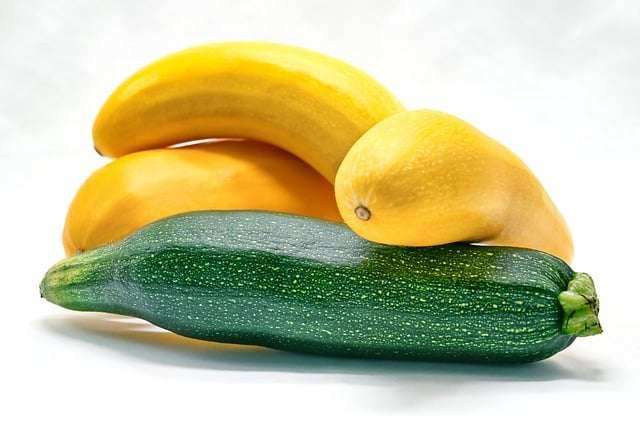-
Table of Contents
- The Benefits of Keto Diet Compared to Other Popular Diets
- Exploring the Differences Between Keto and Paleo Diets
- Understanding the Similarities and Contrasts of Keto and Atkins Diets
- How Keto Diet Stacks Up Against Other Low-Carb Diets
- Debunking Myths: Keto Diet vs. Other Trendy Diets
- Q&A
- Conclusion
The Keto diet, also known as the ketogenic diet, is a low-carbohydrate, high-fat diet that has gained popularity in recent years. It focuses on drastically reducing carbohydrate intake and replacing it with fat, which puts the body into a metabolic state called ketosis. This state encourages the body to burn fat for fuel instead of carbohydrates. While the Keto diet has its own unique approach, it is often compared to other popular diets such as the paleo diet and the Atkins diet. These diets also emphasize low-carbohydrate intake but differ in their specific guidelines and principles. In this introduction, we will briefly explore the key differences between the Keto diet and other popular diets like paleo and Atkins.
The Benefits of Keto Diet Compared to Other Popular Diets
The Benefits of Keto Diet Compared to Other Popular Diets
When it comes to dieting, there are countless options available. From paleo to Atkins, it can be overwhelming to choose the right one for you. However, one diet that has gained significant popularity in recent years is the keto diet. This low-carb, high-fat diet has been praised for its numerous health benefits and weight loss potential. In this article, we will explore the benefits of the keto diet compared to other popular diets like paleo and Atkins.
First and foremost, one of the main advantages of the keto diet is its ability to promote weight loss. By drastically reducing carbohydrate intake and increasing fat consumption, the body enters a state of ketosis. In this state, the body burns fat for fuel instead of carbohydrates, leading to rapid weight loss. Unlike other diets that focus on calorie restriction, the keto diet allows you to eat until you are satisfied, making it easier to stick to in the long run.
Another benefit of the keto diet is its ability to improve mental clarity and focus. When the body is in ketosis, it produces ketones, which are an alternative source of energy for the brain. This can lead to increased mental clarity and improved cognitive function. In contrast, diets like paleo and Atkins do not specifically target the production of ketones, which may result in less noticeable mental benefits.
Furthermore, the keto diet has been shown to have positive effects on various health conditions. For example, studies have found that the keto diet can help reduce inflammation in the body, which is a common factor in many chronic diseases. Additionally, the keto diet has been shown to improve insulin sensitivity and blood sugar control, making it an excellent option for individuals with type 2 diabetes or prediabetes.
In comparison, while the paleo diet also focuses on whole, unprocessed foods, it allows for a higher carbohydrate intake. This can make it more challenging to achieve and maintain a state of ketosis. Similarly, the Atkins diet allows for a higher protein intake, which can also hinder ketosis. Therefore, if weight loss or the therapeutic benefits of ketosis are your primary goals, the keto diet may be a more suitable option.
Moreover, the keto diet offers a wide variety of food choices, making it easier to adhere to in the long term. While the paleo diet restricts certain food groups like grains and legumes, the keto diet allows for a wider range of foods, including healthy fats like avocados and nuts. This flexibility can make it easier to stick to the diet and avoid feelings of deprivation.
In conclusion, the keto diet offers numerous benefits compared to other popular diets like paleo and Atkins. From its ability to promote weight loss and improve mental clarity to its positive effects on various health conditions, the keto diet has proven to be a powerful tool for achieving optimal health. While other diets may have their merits, the keto diet’s unique focus on ketosis sets it apart from the rest. So, if you’re looking for a diet that can help you shed pounds, boost your brainpower, and improve your overall well-being, the keto diet may be worth considering.
Exploring the Differences Between Keto and Paleo Diets
The world of diets can be overwhelming, with new trends popping up left and right. Two popular diets that have gained a lot of attention in recent years are the keto diet and the paleo diet. Both diets have their own unique principles and benefits, but they also have some key differences that set them apart. In this article, we will explore the differences between the keto and paleo diets, helping you make an informed decision about which one might be right for you.
Let’s start by looking at the keto diet. The keto diet is a low-carb, high-fat diet that aims to put your body into a state of ketosis. This means that your body will start burning fat for fuel instead of carbohydrates. The main idea behind the keto diet is to drastically reduce your carbohydrate intake and replace it with healthy fats. This can lead to rapid weight loss and increased energy levels. However, it’s important to note that the keto diet can be quite restrictive, as it requires you to cut out many foods that are high in carbohydrates, such as bread, pasta, and sugar.
On the other hand, the paleo diet focuses on eating foods that our ancestors would have eaten during the Paleolithic era. This means that the paleo diet emphasizes whole, unprocessed foods such as lean meats, fish, fruits, vegetables, nuts, and seeds. The paleo diet excludes grains, legumes, dairy products, and processed foods. The idea behind the paleo diet is that our bodies are not adapted to the modern diet, which is high in processed foods and grains. By eating like our ancestors, we can improve our overall health and well-being.
One of the main differences between the keto and paleo diets is their approach to carbohydrates. While the keto diet restricts carbohydrates to a minimum, the paleo diet allows for a moderate intake of carbohydrates from fruits and vegetables. This means that on the paleo diet, you can still enjoy a wide variety of fruits and vegetables, which are rich in essential vitamins and minerals. On the other hand, the keto diet severely limits your carbohydrate intake, which can make it more difficult to meet your nutritional needs.
Another difference between the two diets is their approach to fats. The keto diet encourages the consumption of healthy fats, such as avocados, nuts, and olive oil. These fats are essential for providing energy and supporting various bodily functions. On the other hand, the paleo diet also allows for the consumption of healthy fats but does not emphasize them as much as the keto diet does. Instead, the paleo diet focuses more on lean meats and fish as sources of protein.
In conclusion, both the keto and paleo diets have their own unique principles and benefits. The keto diet is a low-carb, high-fat diet that aims to put your body into a state of ketosis, while the paleo diet focuses on eating whole, unprocessed foods. The main differences between the two diets lie in their approach to carbohydrates and fats. The keto diet restricts carbohydrates to a minimum and emphasizes the consumption of healthy fats, while the paleo diet allows for a moderate intake of carbohydrates from fruits and vegetables and focuses more on lean meats and fish. Ultimately, the choice between the two diets depends on your personal preferences and goals.
Understanding the Similarities and Contrasts of Keto and Atkins Diets

The world of diets can be overwhelming, with new trends popping up left and right. Two popular diets that have gained a lot of attention in recent years are the keto diet and the Atkins diet. While both diets focus on low-carb eating, there are some key differences between the two. Understanding these similarities and contrasts can help you make an informed decision about which diet might be right for you.
First, let’s take a closer look at the keto diet. The keto diet is a low-carb, high-fat diet that aims to put your body into a state of ketosis. This means that your body is burning fat for fuel instead of carbohydrates. The diet typically consists of 70-75% fat, 20-25% protein, and only 5-10% carbohydrates. By severely limiting your carb intake, the keto diet forces your body to use fat as its primary source of energy.
On the other hand, the Atkins diet is also a low-carb diet, but it allows for a higher protein intake compared to the keto diet. The Atkins diet is divided into four phases, with each phase gradually increasing your carb intake. The first phase, known as the induction phase, is the most restrictive, allowing only 20 grams of carbs per day. As you progress through the phases, you gradually increase your carb intake until you find a level that allows for weight loss without causing cravings or weight gain.
One of the main similarities between the keto and Atkins diets is their focus on reducing carbohydrate intake. Both diets aim to minimize the consumption of foods high in carbs, such as bread, pasta, and sugary snacks. By doing so, they help stabilize blood sugar levels and promote weight loss. Additionally, both diets emphasize the importance of consuming healthy fats and protein to keep you feeling satisfied and full.
However, there are some key differences between the two diets. The keto diet is much stricter in terms of carb intake, allowing only 20-50 grams of carbs per day. This can be challenging for some individuals, as it requires careful planning and monitoring of food choices. On the other hand, the Atkins diet allows for a higher carb intake, making it a more flexible option for those who may find it difficult to adhere to a very low-carb diet.
Another difference between the two diets is their approach to fat consumption. While the keto diet encourages high-fat intake, the Atkins diet focuses more on protein. This difference in macronutrient distribution can have varying effects on individuals. Some people may find that they feel more satisfied and energized on a high-fat diet, while others may prefer a higher protein intake for muscle maintenance and satiety.
In conclusion, both the keto and Atkins diets share the common goal of reducing carbohydrate intake to promote weight loss and stabilize blood sugar levels. However, the keto diet is more restrictive in terms of carb intake and emphasizes high-fat consumption, while the Atkins diet allows for a higher carb intake and focuses more on protein. Ultimately, the choice between the two diets depends on your personal preferences and goals. It’s important to consult with a healthcare professional or registered dietitian before starting any new diet to ensure it aligns with your individual needs and health conditions.
How Keto Diet Stacks Up Against Other Low-Carb Diets
The world of diets can be overwhelming. With so many options out there, it’s hard to know which one is right for you. Two popular low-carb diets that often come up in conversation are the keto diet and the paleo diet. But how does the keto diet stack up against other low-carb diets, such as Atkins? Let’s take a closer look.
The keto diet, short for ketogenic diet, is a low-carb, high-fat diet that has gained popularity in recent years. It focuses on drastically reducing carbohydrate intake and replacing it with fat. This puts your body into a state of ketosis, where it burns fat for fuel instead of carbohydrates. The paleo diet, on the other hand, is based on the idea of eating like our ancestors did during the Paleolithic era. It emphasizes whole, unprocessed foods and eliminates grains, legumes, and dairy.
One of the main differences between the keto diet and the paleo diet is the macronutrient breakdown. While both diets are low in carbohydrates, the keto diet is much higher in fat. This can be a turn-off for some people who are used to a low-fat diet. However, proponents of the keto diet argue that the high fat intake is what helps you stay in ketosis and burn fat for fuel.
Another key difference between the two diets is the focus on food quality. The paleo diet places a strong emphasis on eating whole, unprocessed foods. This means avoiding processed foods, refined sugars, and artificial ingredients. The keto diet, on the other hand, doesn’t have strict guidelines when it comes to food quality. As long as you’re keeping your carbohydrate intake low and your fat intake high, you can technically eat whatever you want. This can be both a blessing and a curse, as it allows for more flexibility but also opens the door to unhealthy food choices.
Now, let’s compare the keto diet to the Atkins diet. The Atkins diet is another low-carb diet that has been around for decades. It was popularized in the early 2000s and focuses on reducing carbohydrate intake to induce weight loss. Like the keto diet, the Atkins diet puts your body into a state of ketosis. However, the Atkins diet has different phases, with the initial phase being the most restrictive in terms of carbohydrate intake. As you progress through the phases, you gradually increase your carbohydrate intake.
One advantage of the Atkins diet over the keto diet is the flexibility it offers. With the Atkins diet, you have more options when it comes to food choices and can gradually reintroduce carbohydrates into your diet. This can make it easier to stick to the diet long-term and maintain weight loss. The keto diet, on the other hand, requires a strict adherence to low carbohydrate intake, which can be challenging for some people.
In conclusion, the keto diet, paleo diet, and Atkins diet are all low-carb diets that have their own unique characteristics. The keto diet is high in fat and focuses on staying in ketosis, while the paleo diet emphasizes whole, unprocessed foods. The Atkins diet offers more flexibility in terms of food choices and allows for a gradual increase in carbohydrate intake. Ultimately, the best diet for you will depend on your personal preferences and goals. It’s important to consult with a healthcare professional before starting any new diet to ensure it’s safe and appropriate for you.
Debunking Myths: Keto Diet vs. Other Trendy Diets
The world of diets is a confusing one. With so many options out there, it’s hard to know which one is the best for you. Two popular diets that often get compared are the keto diet and other trendy diets like paleo and Atkins. In this article, we will debunk some common myths and compare the keto diet to these other diets.
First, let’s talk about the keto diet. The keto diet is a low-carb, high-fat diet that aims to put your body into a state of ketosis. This means that your body is burning fat for fuel instead of carbohydrates. Many people claim that the keto diet is the best way to lose weight and improve overall health. But is it really better than other diets?
One common myth about the keto diet is that it is too restrictive. People often think that you can only eat bacon and butter on the keto diet. While it is true that you need to limit your carbohydrate intake, there are still plenty of delicious foods you can eat. Avocados, nuts, and fatty fish are all great options for those on the keto diet. Plus, there are many keto-friendly recipes available online that can help you stay on track.
Another myth about the keto diet is that it is not sustainable in the long term. People often worry that they will get bored of eating the same foods over and over again. However, with a little creativity, you can make a wide variety of meals that fit within the keto guidelines. Plus, there are many keto-friendly snacks and desserts available that can help satisfy your cravings.
Now let’s compare the keto diet to other popular diets like paleo and Atkins. The paleo diet focuses on eating foods that our ancestors would have eaten, such as lean meats, fruits, and vegetables. Like the keto diet, it also limits carbohydrate intake. However, the paleo diet allows for a wider variety of foods, including some carbohydrates like sweet potatoes and fruit. This can make it easier to stick to in the long term.
The Atkins diet is another low-carb diet that has been around for decades. It is similar to the keto diet in that it restricts carbohydrate intake. However, the Atkins diet has different phases, with the first phase being the most restrictive. As you progress through the phases, you gradually increase your carbohydrate intake. This can make the Atkins diet more flexible than the keto diet.
In conclusion, while the keto diet may have its benefits, it is not necessarily better than other trendy diets like paleo and Atkins. The key to finding the right diet for you is to consider your personal preferences and goals. If you enjoy a wider variety of foods and want a more flexible approach, the paleo or Atkins diet may be a better fit. However, if you are looking for a strict and structured plan, the keto diet may be worth a try. Ultimately, the best diet is the one that you can stick to and that works for your individual needs.
Q&A
1. How does the Keto diet differ from the Paleo diet?
The Keto diet focuses on high fat, low carbohydrate intake to induce ketosis, while the Paleo diet emphasizes whole, unprocessed foods similar to what our ancestors ate.
2. What sets the Keto diet apart from the Atkins diet?
The Keto diet emphasizes a higher fat intake and moderate protein intake, while the Atkins diet allows for higher protein consumption and gradually reintroduces carbohydrates.
3. How does the Keto diet compare to the Mediterranean diet?
The Keto diet restricts carbohydrate intake significantly, while the Mediterranean diet emphasizes whole grains, fruits, vegetables, and healthy fats like olive oil.
4. What are the main differences between the Keto diet and the South Beach diet?
The Keto diet focuses on high fat and very low carbohydrate intake, inducing ketosis, while the South Beach diet emphasizes lean protein, whole grains, and healthy fats with a gradual reduction in carbohydrates.
5. How does the Keto diet differ from the DASH diet?
The Keto diet restricts carbohydrate intake to induce ketosis, while the DASH diet promotes a balanced approach with a focus on reducing sodium intake and increasing fruits, vegetables, whole grains, and lean proteins.
Conclusion
In conclusion, the Keto diet differs from other popular diets such as paleo and Atkins in terms of macronutrient composition and focus. While all three diets restrict carbohydrates, the Keto diet emphasizes high fat intake, moderate protein consumption, and very low carbohydrate intake. This unique approach aims to induce a state of ketosis, where the body primarily burns fat for fuel. On the other hand, paleo and Atkins diets have different macronutrient ratios and focus on whole, unprocessed foods. Ultimately, the choice between these diets should be based on individual preferences, health goals, and consultation with a healthcare professional.













